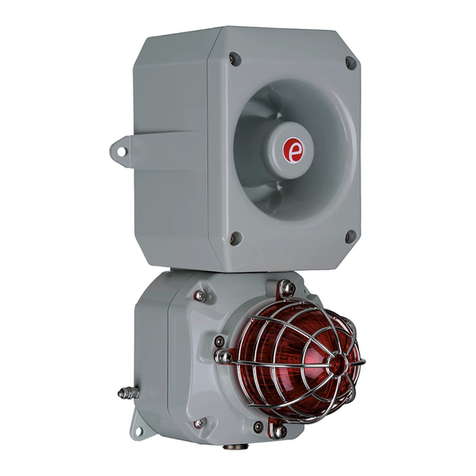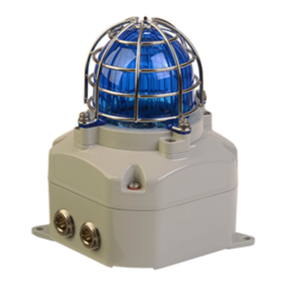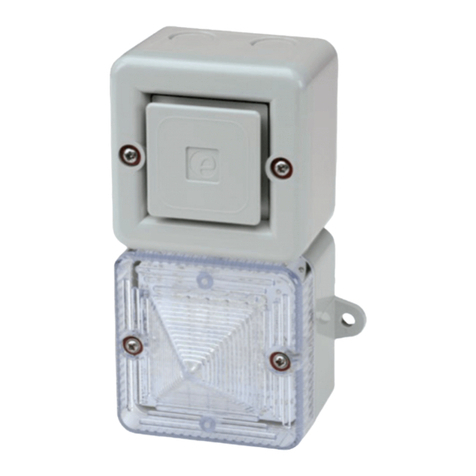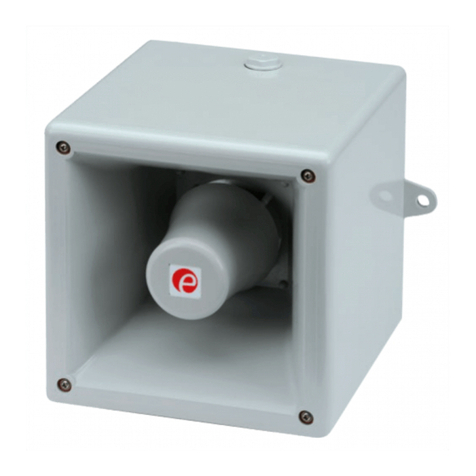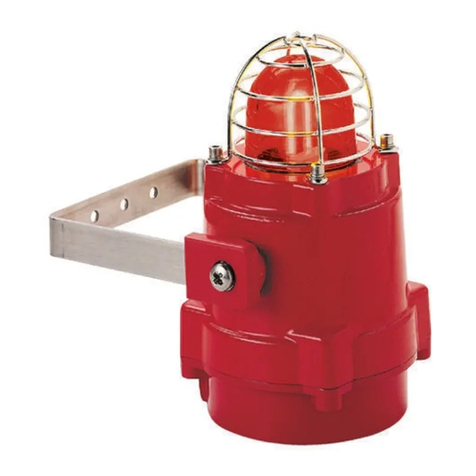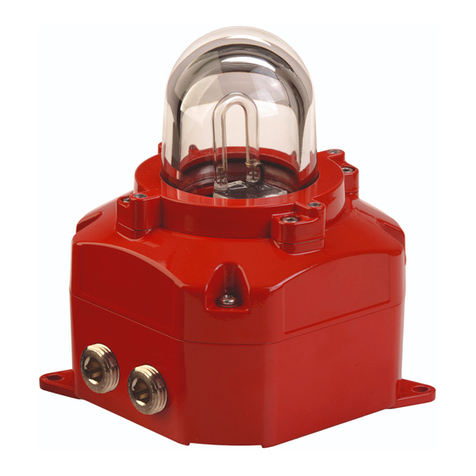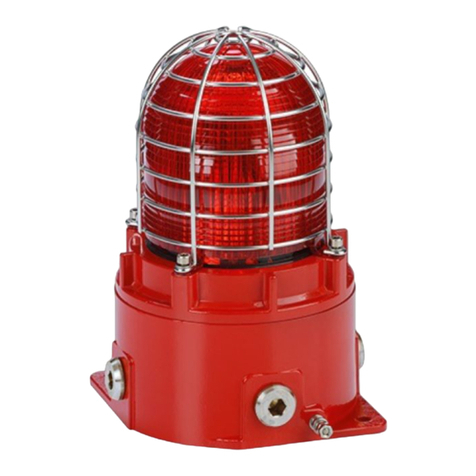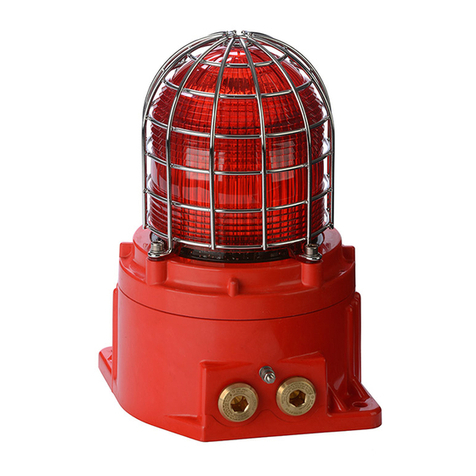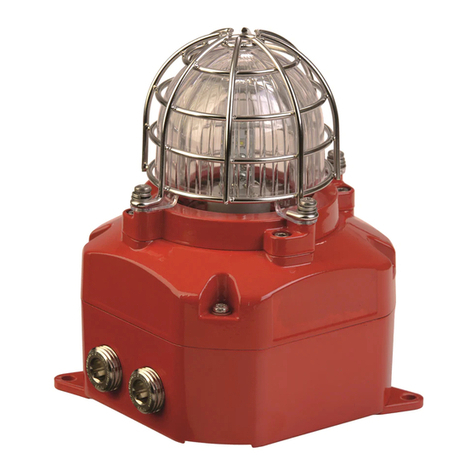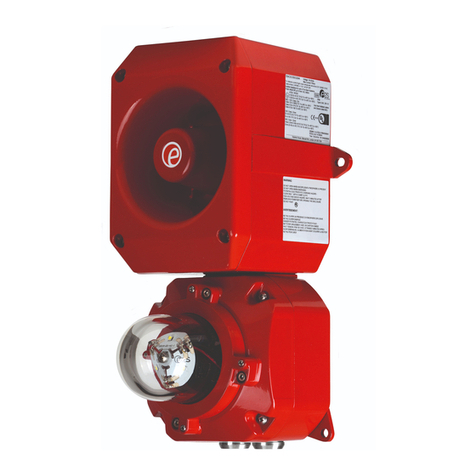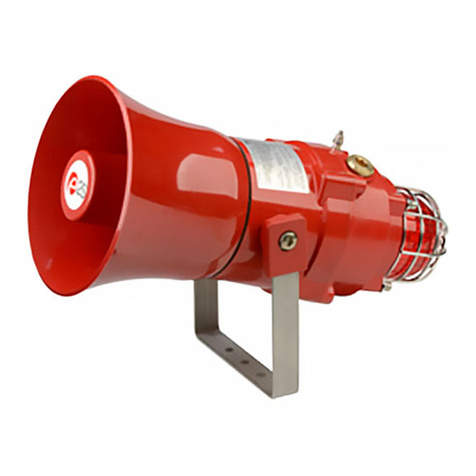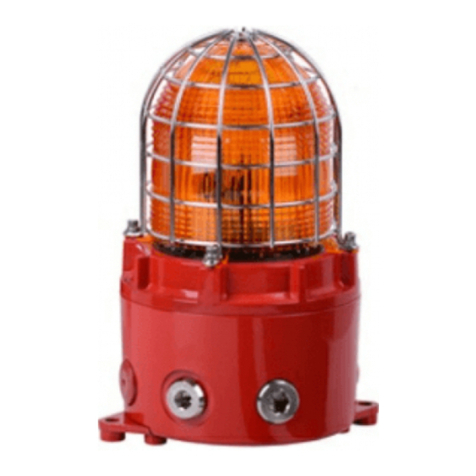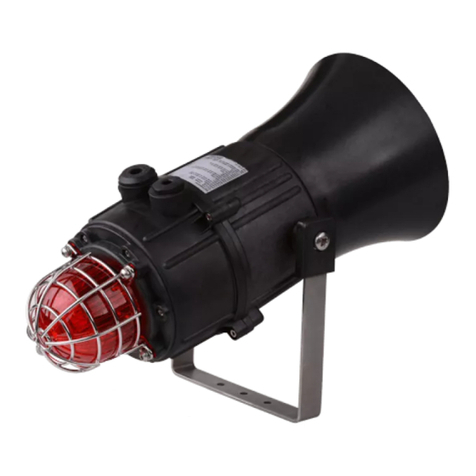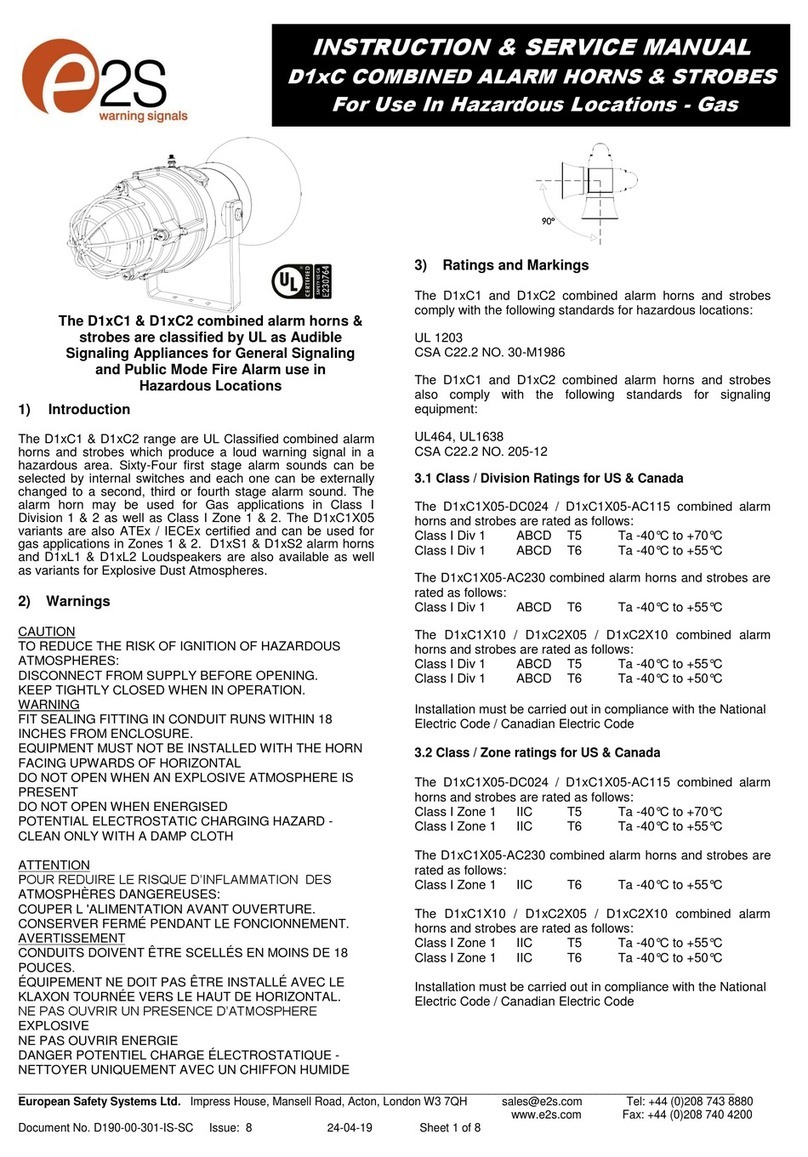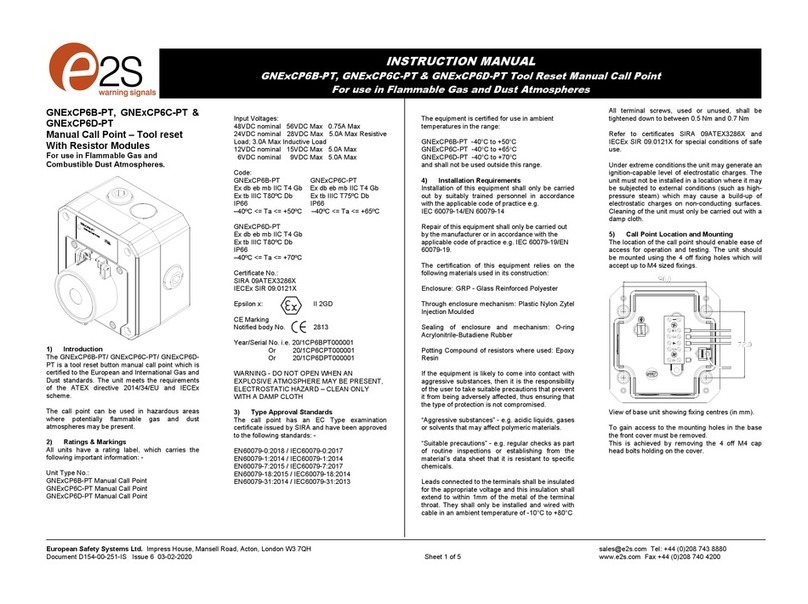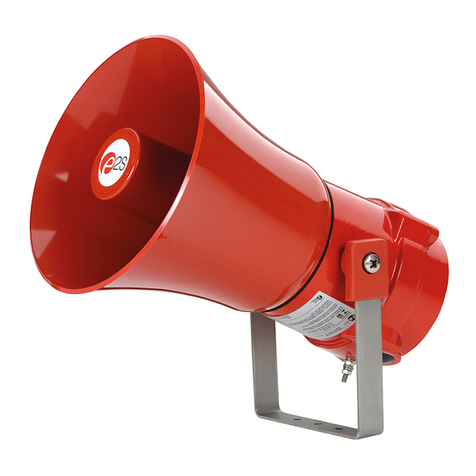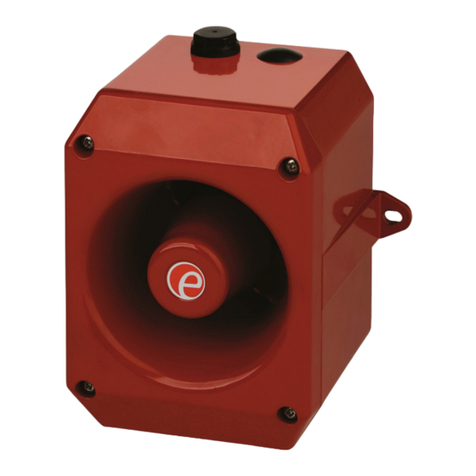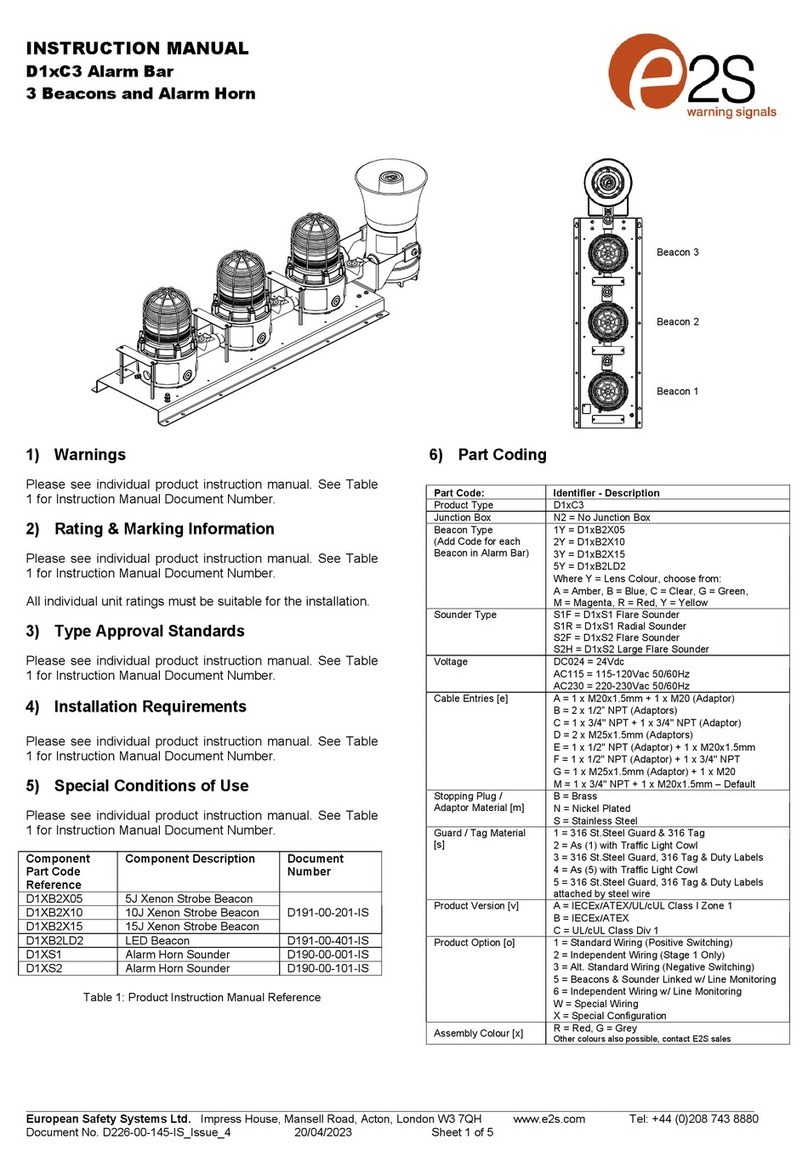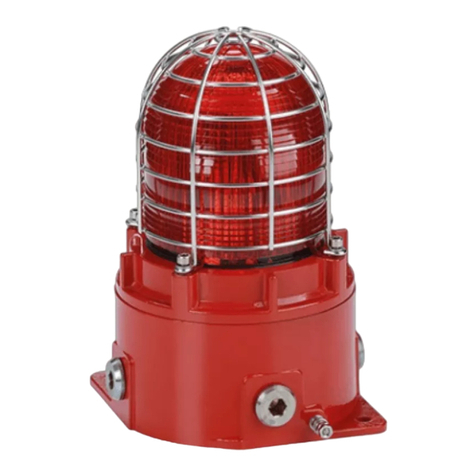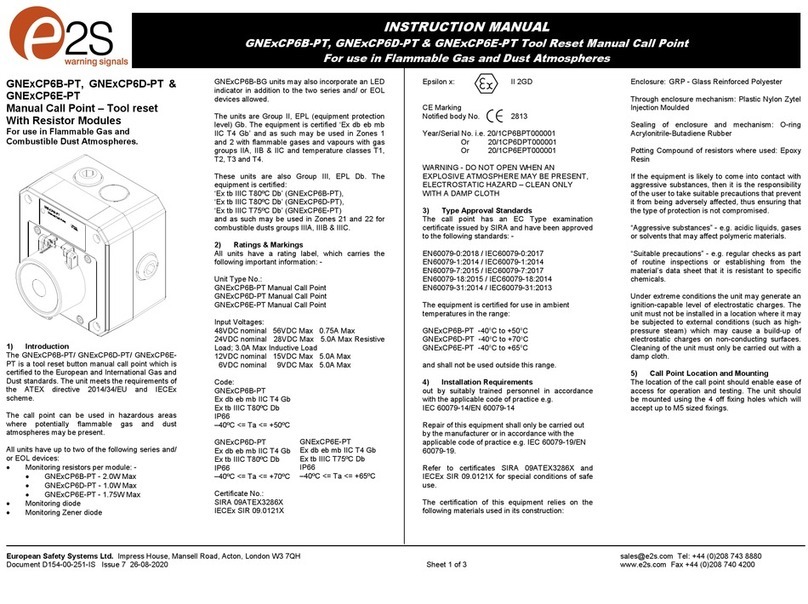
European Safety Systems Ltd. Impress House, Mansell Road, Acton, London W3 7QH
Document No. D190-00-671-IS
5) Specific Conditions of Installation
ATEx/IECEx & UKEx Installations:
The cable entries have two M20 x 1.5 6H entry thread and a
glands, only suitably rated ATEx/IECEx or UKEx certified cable
glands must be used. They must be suitable for the type of cable
being used and also meet the requirements of the current
installation standards EN 60079-14 / IEC60079-14.
If the installation is made using conduit, openings must have a
sealing fitting connected as close as practical to the wall of the
enclosure, but in no case more than the size of the conduit or
50mm, whichever is the lesser.
Any unused cable entries must be closed with suitably rated and
UKEx certified blanking plugs.
NEC / CEC Installations:
The cable entries have two M20 x 1.5 6H entry thread and a
glands, only suitably rated and UKEx certified cable glands must
be used. They must be suitable for the type of cable being used
and also meet the requirements of the current installation
standards for NEC & CEC.
If the installation is made using conduit, openings must have a
Any unused cable entries must be closed with suitably rated and
certified blanking plugs.
All Installations:
The plastic horn is not anti-static and the metallic enclosure has a non-
conductive coating. These may generate an ignition-capable level of
electrostatic charges under certain extreme conditions. The user
should ensure that the equipment is not installed in a location where it
may be subjected to external conditions that might cause a build-up of
electrostatic charges on non-conducting surfaces.
6) Specific Conditions for Safe Use
Flameproof threaded joints and cemented joints are not permitted to
be repaired.
7) Product Mounting and Access
7.1. Mounting
Fig 1: Mounting Locations
7.2. Installation procedure
a. Secure the D1x unit to a flat surface via the three 7mm
fixing holes in the mounting bracket.
b. Remove the explosionproof cover of the alarm horn by
unscrewing it, taking care not to damage the
explosionproof threads in the process (Refer to section
7.4).
c. Fit an M20/NPT suitably rated cable gland or conduit entry
into the hole in the enclosure and connect the field wiring
to the appropriate alarm horn terminals as shown in D190-
06-651. The power supply terminals are duplicated so that
units may be connected in parallel. An end of line
monitoring resistor may be fitted to DC units only (see
section 10). If the second and third M20/NPT entries are
not used, suitably rated stopping plugs must always be
fitted.
d. Replace the explosionproof cover of the loudspeaker,
taking care not to damage the explosionproof threads.
Tighten fully.
7.3. Hornless Variants
Minimum Ratings of Cables & Cable Glands
D1xS2FDC024-S Min. Rating (°C)
Table 2: Min. Ratings of Cables & Cable Glands.
